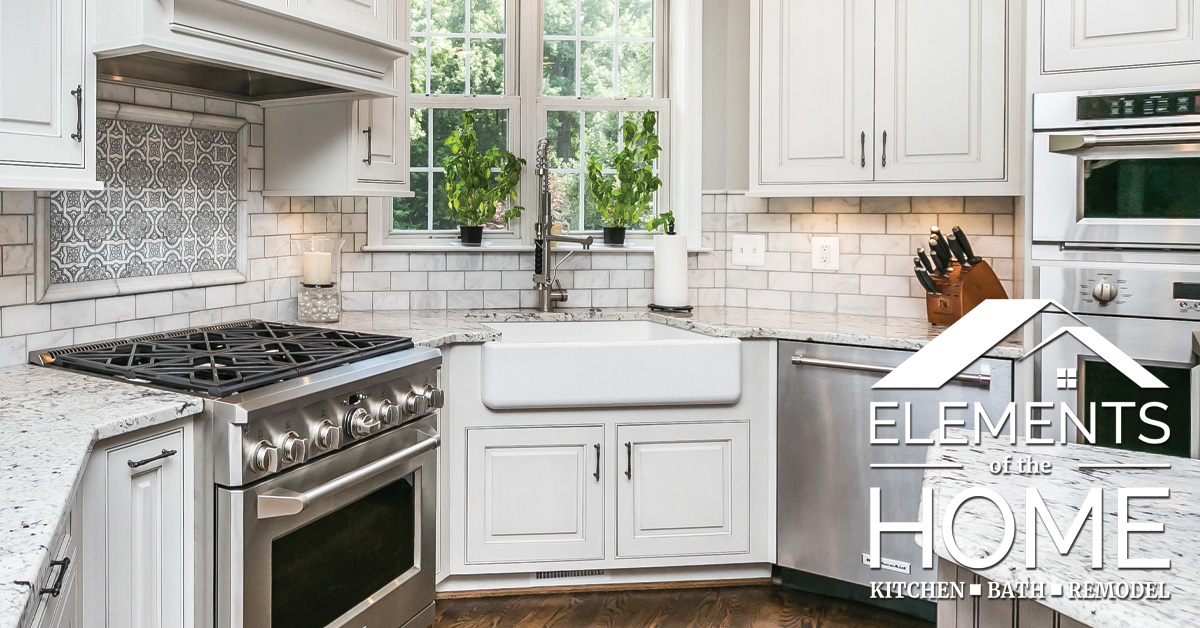
When planning a kitchen remodel, one of the most important decisions you’ll make is selecting one of many kitchen styles. At Elements of the Home, we know that the kitchen is more than just a place to cook—memories are made, conversations happen, and meals are shared. The style will set the tone, reflect your personality, and influence every design choice, from cabinets and countertops to lighting and hardware. Let’s explore some of the most popular kitchen styles and what makes each unique.
Modern Kitchen Styles
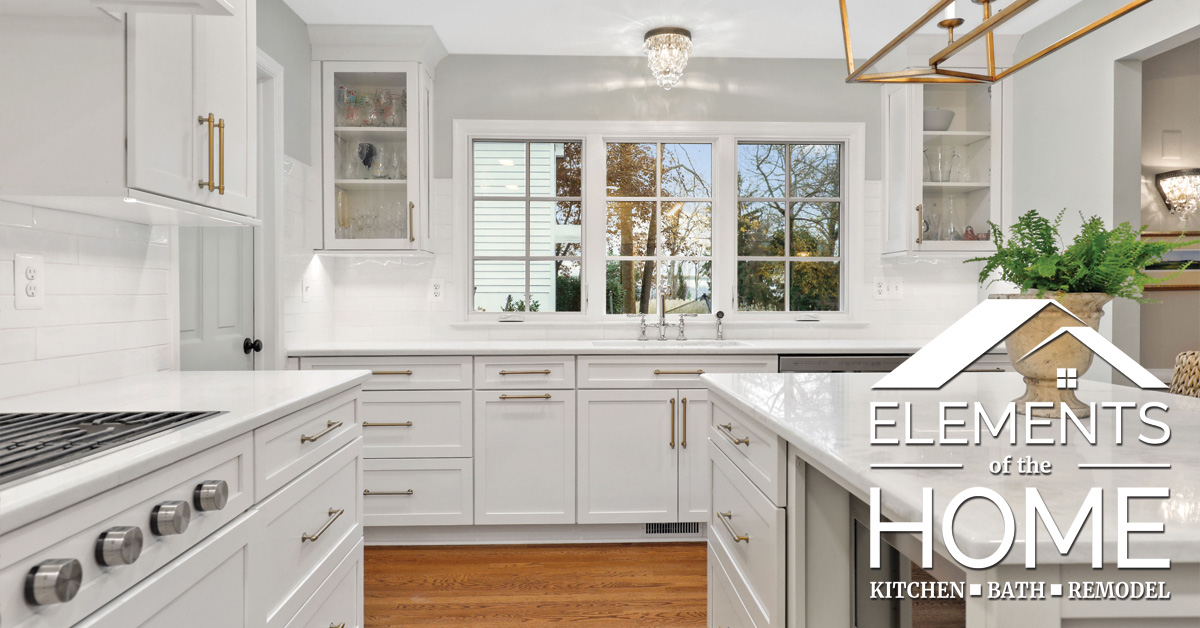
If you love clean lines, minimalism, and cutting-edge design, a modern kitchen might be the perfect fit for your home. Modern kitchen styles prioritize simplicity, functionality, and sleek aesthetics. This style often incorporates flat-panel cabinets, frameless construction, and smooth surfaces that create a streamlined and uncluttered look.
Key features of a modern kitchen:
- Minimalist design: You’ll find minimal ornamentation and a focus on clean, horizontal lines.
- Bold materials: Stainless steel, glass, concrete, and natural stone are commonly used in modern kitchens.
- Neutral color palettes: Modern kitchens often feature white, black, or gray tones, accented by bold colors or natural wood elements.
- Integrated appliances: Appliances are often built into the cabinetry or hidden behind panels for a seamless look.
Modern kitchens are perfect for those who prefer a clutter-free, contemporary aesthetic that feels functional and sophisticated.
Traditional Kitchen Styles

For homeowners who love a warm, inviting, and timeless look, the traditional kitchen style offers a classic appeal that never goes out of fashion. Traditional kitchens emphasize rich cabinetry, intricate details, and a sense of formality. This style often incorporates classic design elements like raised-panel doors, decorative moldings, and elegant hardware.
- What defines a traditional kitchen?
- Detailed cabinetry: Raised-panel cabinets, crown molding, and carved details are common.
- Warm, natural materials: Wood, stone, and rich granite countertops often define traditional kitchens.
- Ornate lighting: Chandeliers or decorative pendant lights add an elegant touch.
- Neutral and warm color palettes: Cream, beige, and natural wood tones are typical in traditional kitchens, often complemented by warm accent colors like deep reds or soft blues.
- Traditional kitchens are perfect for those who appreciate timeless elegance and want a cozy, welcoming, and classic kitchen.
Farmhouse Kitchen Styles
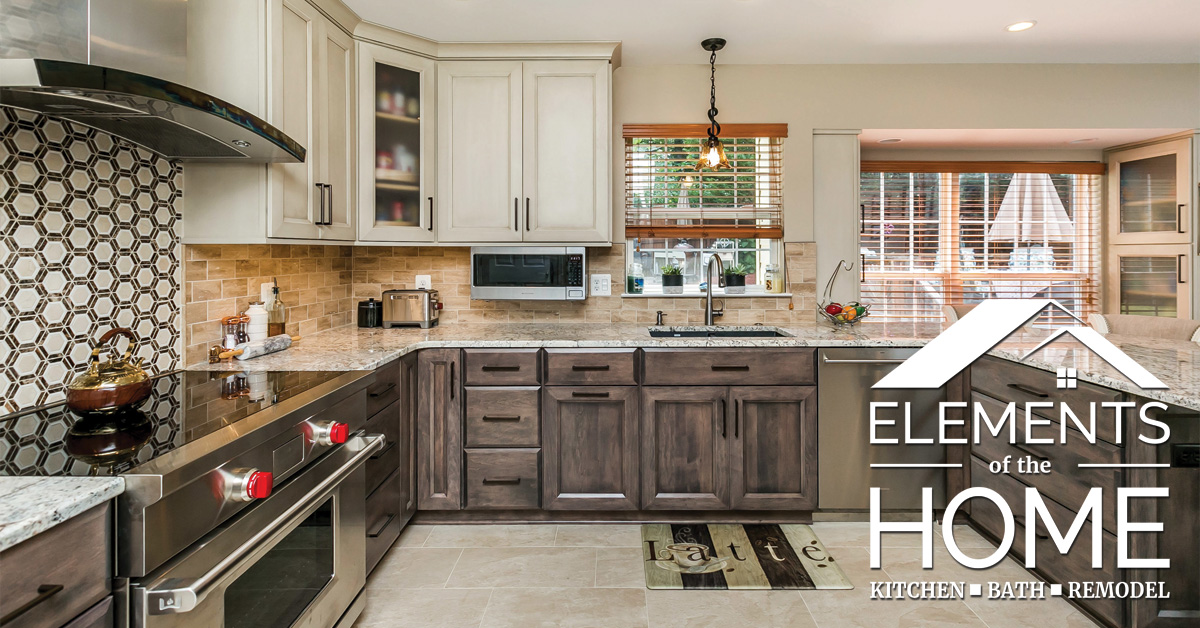
If you’re drawn to rustic charm and the warmth of country living, a farmhouse kitchen might be just the right style for you. Farmhouse kitchens blend the nostalgic with the functional, creating a welcoming space, perfect for family gatherings and big meals. This style emphasizes natural materials, vintage-inspired details, and a comfortable, lived-in feel.
Features of a farmhouse kitchen:
- Shaker-style cabinets: Simple, classic, and versatile, Shaker cabinets are a staple in farmhouse kitchens.
- Apron-front sink: Also known as a farmhouse sink, this deep, wide sink is stylish and functional.
- Open shelving: Many farmhouse kitchens include open shelving to display cookware, dishes, or decorative items.
- Natural wood and distressed finishes: Reclaimed wood beams, butcher block countertops, and weathered finishes add to the rustic appeal.
Farmhouse kitchens are ideal for a cozy, welcoming space combining rustic charm and modern functionality.
Transitional Kitchen Styles
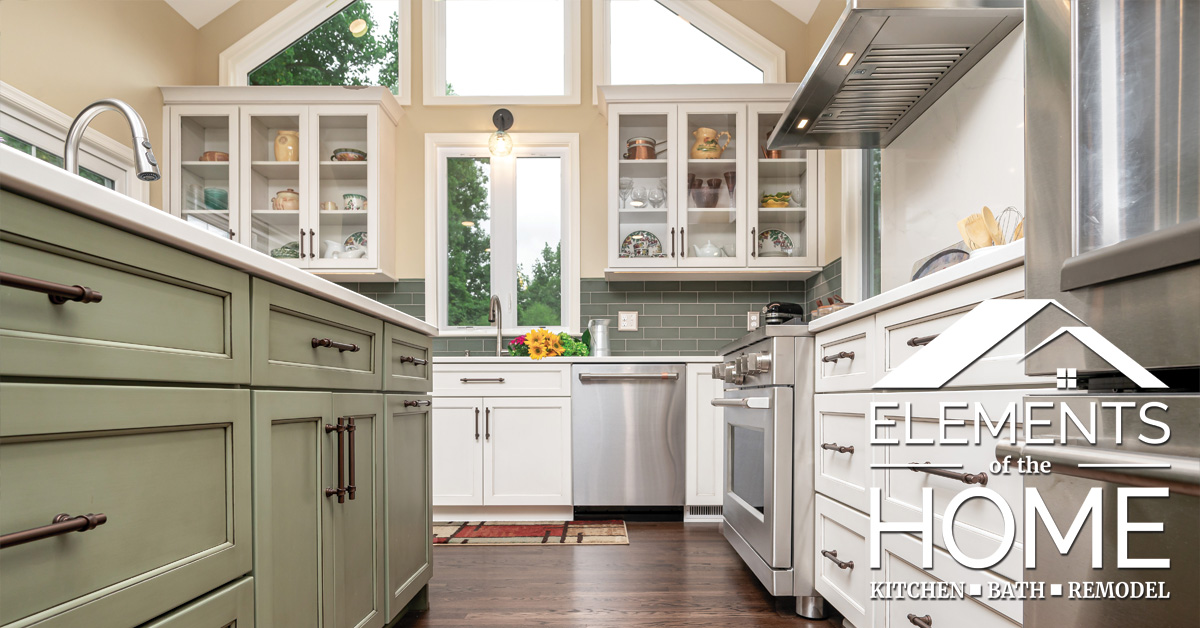
For homeowners who want the best of both worlds, the transitional kitchen style blends the timeless elegance of traditional design with the sleek simplicity of modern aesthetics. This style is all about balance and harmony, creating a space that feels current but not too trendy.
What makes a transitional kitchen unique?
- Blended materials: Transitional kitchens often mix natural materials like wood and stone with more modern elements like stainless steel and glass.
- Simple yet sophisticated cabinetry: Shaker-style or flat-panel cabinets are common in transitional kitchens, often in neutral tones like white, gray, or beige.
- Functional layouts: Transitional kitchens focus on creating a user-friendly space, combining the best modern and traditional design elements.
- Soft, neutral color palettes: Whites, grays, and natural wood tones dominate, with subtle accents in muted colors.
Transitional kitchens are great for those who want a timeless, versatile space that feels comfortable and stylish.
Contemporary Kitchen Styles
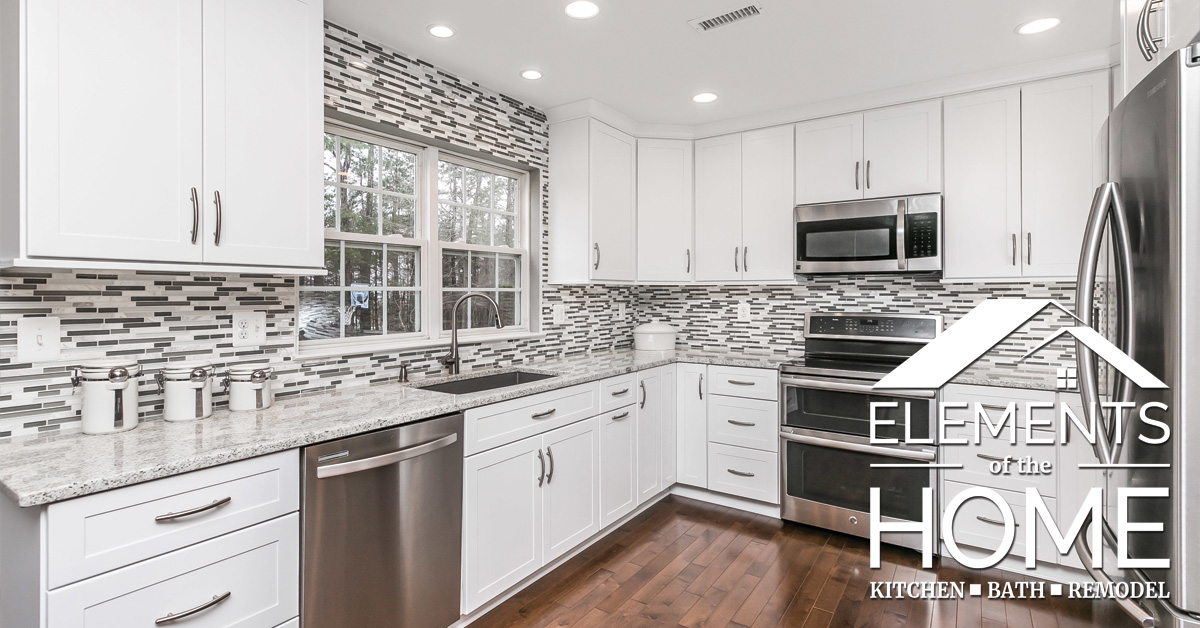
Often confused with modern kitchens, contemporary kitchens are defined by their on-trend, ever-evolving design elements. Contemporary kitchens incorporate current design trends, blending minimalist aesthetics with the latest materials and technologies. These kitchens are clean, sleek, and highly functional, but they also tend to be more playful and less rigid than modern kitchens.
What sets contemporary kitchens apart?
- Cutting-edge materials: High-gloss finishes, quartz countertops, and unique materials like concrete or eco-friendly surfaces are common.
- Bold colors and contrasts: While contemporary kitchens often start with a neutral base, they are more likely to feature pops of bold color or dramatic contrasts.
- Smart appliances and technology: Many contemporary kitchens incorporate smart appliances, touchless faucets, or integrated lighting systems.
- Streamlined cabinetry: Flat-panel cabinets with hidden handles or push-to-open mechanisms create a sleek, uncluttered look.
Suppose you love staying on top of design trends and want a current and innovative kitchen. In that case, a contemporary kitchen might be the perfect fit for your home.
Industrial Kitchen Styles
If you love raw, edgy design and an urban feel, the industrial kitchen style might be just what you’re looking for. This style draws inspiration from old factories and warehouses, incorporating unfinished elements, exposed brick, and utilitarian materials like metal and concrete. Industrial kitchens are bold, functional, and full of character.
Key elements of an industrial kitchen:
- Exposed structural elements: Brick walls, beams, and ductwork are often left visible for an authentic industrial vibe.
- Mixed materials: Stainless steel, reclaimed wood, concrete, and exposed metal are typical in industrial kitchens.
- Open shelving: Metal or wood open shelving adds to the practical look while providing extra storage space.
- Neutral tones: Industrial kitchens often feature a neutral palette of grays, browns, and blacks, with metal accents.
Industrial kitchens are perfect for those who love a raw, unfinished look with plenty of character and a touch of urban chic.
Coastal Kitchen Styles
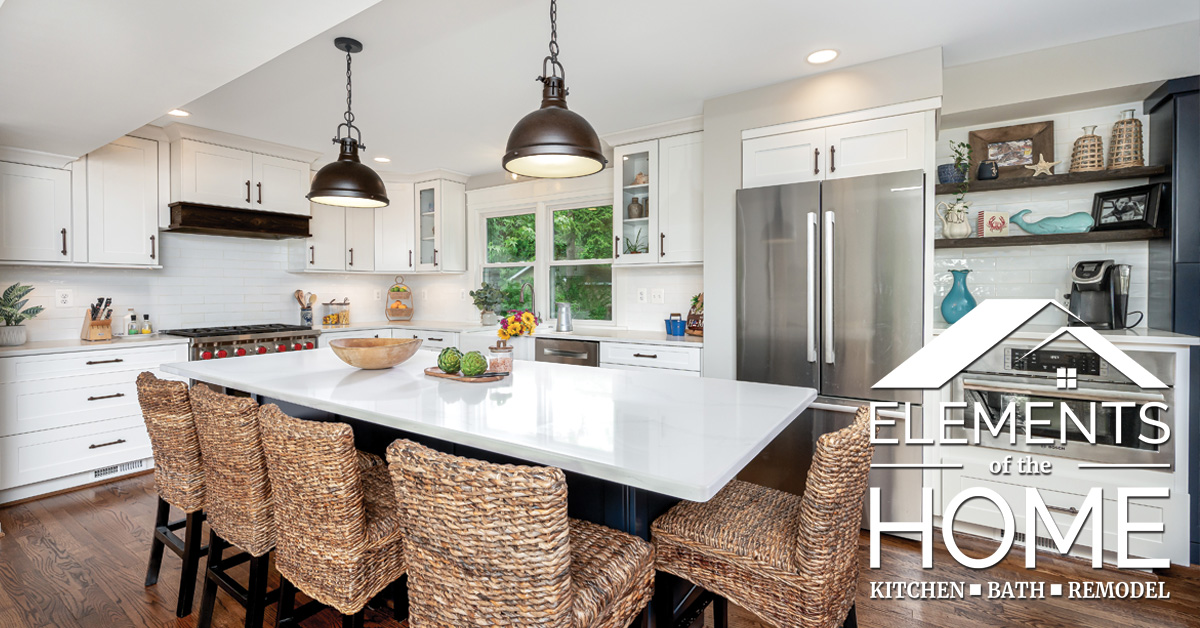
For homeowners who dream of ocean views and a light, breezy atmosphere, the coastal kitchen style brings the beach into your home. This style incorporates light colors, natural materials, and an open, airy feel. Whether your home is by the water, or you just want to evoke the feeling of a beachside retreat, a coastal kitchen can create a refreshing and tranquil space.
What defines a coastal kitchen?
- Light and airy: Coastal kitchens feature light colors like white, soft blues, and sandy neutrals.
- Natural materials: Wood, rattan, and linen are often incorporated to create a relaxed, beachy vibe.
- Large windows and open spaces: Coastal kitchens maximize natural light and create a spacious, open feel.
- Nautical touches: You might find details like glass pendant lights, shiplap walls, or sea-inspired decor.
Coastal kitchens are ideal for homeowners who want to create a calm, serene space that feels fresh and inviting.
Finding the Perfect Kitchen Style for You
At Elements of the Home, we believe that your kitchen should reflect your unique taste, lifestyle, and needs. Whether you’re drawn to the sleek lines of a modern kitchen, the rustic charm of a farmhouse kitchen, or the timeless elegance of a traditional kitchen, we’re here to help you create a space that’s both beautiful and functional. Let’s work together to design the kitchen of your dreams! Contact us today to get started.